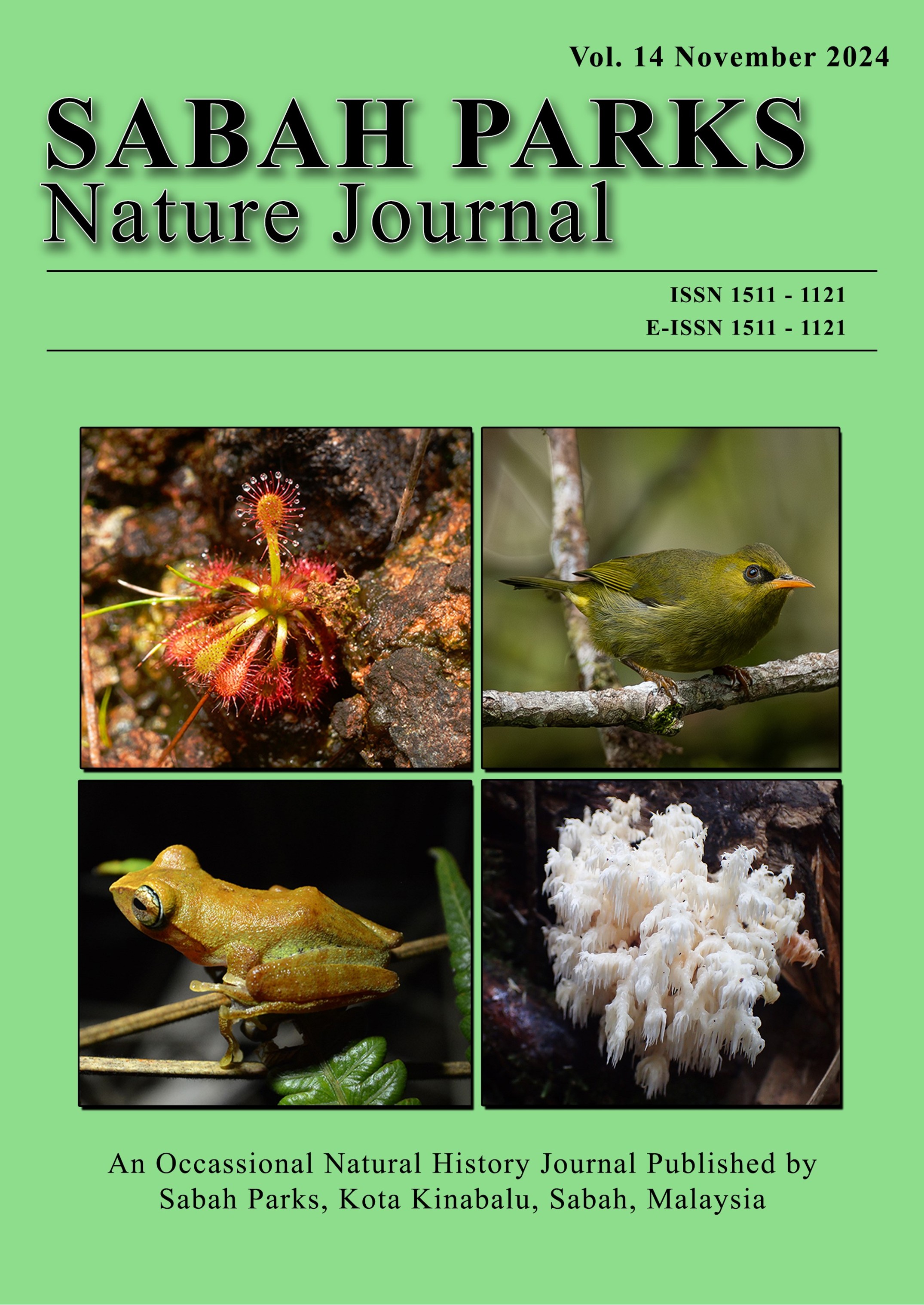Preliminary Survey Of The Macrofungi Of Marai Parai – Gurkha Hut, Kota Belud, Sabah
Keywords:
macrofungi, diversity, Borneo, Sabah, KinabaluAbstract
Macrofungi represent a significant group of mycorrhizal species, many of which possess high nutritional and medicinal value. They are among the most promising mycorrhizal species for development and application. To improve the understanding of the biodiversity of Marai Parai a recent survey conducted by Sabah Parks in Marai Parai, and surrounding regions uncovered 50 fungal specimens. These specimens represent 31 different genera across 24 families, indicating a rich variety of fungal occurrence in the area. The dominant family during this survey was Ganodermataceae that contains 6 species and Amanitaceae, Entolomaceae, Helotiaceae, Helvellaceae, Hericiaceae, Hydnaceae, Hymenochaetaceae, Aceraceae, Omphalotaeceae, Thelephoraceae, Tricholomaceae, and Xylariaceae was least observed with single species of each family. Macrofungi from this survey was categorized into saprophytic (52%), ectomycorrhizal (44%) and parasitic (4%). The results of this survey suggest that Marai Parai that is located on Mount Kinabalu along with its neighbouring regions on Mount Kinabalu, harbours a rich fungal ecosystem. Similarly, this site has a significant interest for early explorers and naturalists. Past expeditions have primarily focused on flora, leading to several important botanical findings. Despite this, the fungal biodiversity of this region has not been thoroughly examined. Continued and expanded research into the macrofungi of this area is encouraged, as it holds the potential for further significant biological discoveries.
 Views : 441
/
Views : 441
/  Download : 457
Download : 457


